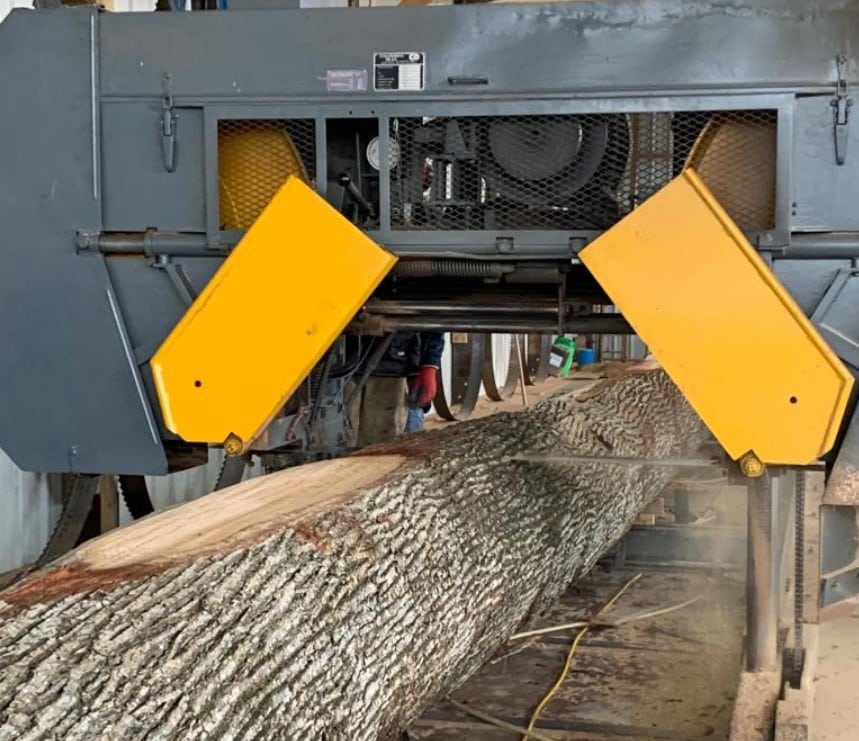When President Macron vowed to have Notre-Dame de Paris standing tall again within a mere five years, skepticism rippled through the masses. The audacious pledge to restore the ravaged cathedral in such a limited timeframe appeared far-fetched at the time.
However, the vision of a restored Notre-Dame by the end of next year no longer feels like a pipe dream.
The new ambitious goal could see the cathedral restored in time for the Paris Olympic Games!
“We committed to the entire world that we would have our cathedral completed within five years,” assets Jean-Louis Georgelin, the retired army general heading the reconstruction who spoke to the BBC about the project last month.
“Our reputation is on the line. We must pool all our knowledge, efforts, and savoir-faire to reach this objective.”
Modern carpenters are using medieval techniques to restore the roof
The ABC reports that carpenters are now employing 800-year-old construction techniques in the roof’s construction
It’s given them a new appreciation of their predecessors’ handiwork that pushed the architectural envelope back in the 13th century.

“It’s a little mind-bending sometimes,” one of the carpenters, Peter Henrikson, said.
He said there were times when he was whacking a mallet on a chisel that he found himself thinking about his medieval counterparts who were cutting “basically the same joint 900 years ago”.
The aim is to pay tribute to the astounding craftsmanship of the cathedral’s original builders and to ensure that the centuries-old art of hand-fashioning wood lives on.
“We want to restore this cathedral as it was built in the Middle Ages,” according to Jean-Louis Georgelin.
“It is a way to be faithful to the [handiwork] of all the people who built all the extraordinary monuments in France.”
French Oak trees are being used in the restoration
From hundreds of oak trees grown and chopped down in the ancient forests of France, the spire base – weighing in at over 80 tonnes – has been transported to Paris and hoisted onto the cathedral roof in recent weeks.
Precise measurements were crucial to fit it into the corners of the medieval masonry where, 900 years prior, the original architects had positioned their initial roof frame.
Workers have now begun installing a replacement, crafted from hundreds of ancient French oaks. Over the coming months, Parisians will witness the spire start to ascend. Initially, it will be shrouded by scaffolding, but they should see it revealed in its full glory by year’s end.
The project is facing a tight-time frame
Facing a tight deadline, carpenters and architects also use computer design and other modern technologies to speed up the reconstruction.
Computers were used to draw detailed plans for carpenters to help ensure their hand-chiseled beams fitted together perfectly.
“Traditional carpenters had a lot of that in their head,” Mr Henrikson said.
“[It’s] pretty amazing to think about how they did this with what they had, the tools and technology that they had at the time.”
For one reason or another, Notre Dame holds a unique place in people’s hearts. Its destruction by fire on April 15, 2019, and the rapid global dissemination of images of the catastrophe, had a societal impact that far exceeded the cathedral’s physical dimensions or age.
It was as though a blow had been dealt to human culture itself.
Notre-Dame’s roof structure is known as ‘the forest’
The fire’s main fuel source was Notre-Dame’s famous“forest”—massive beams crafted from 5000 oaks aged between 300 and 400 years, felled around 1200.
Despite the enormity of the tragedy, the actual damage was largely confined to the roof and the colossal beams that upheld it.
The Notre Dame “forest,” as it’s known, was a dense web of old-growth timber – 13th-century builders harvested 5000 oak trees from 522 hectares of an ancient forest, all 300 to 400 years old – to support the roof with its 200 tonnes of lead cladding, as well as the cathedral’s 92-meter-high oak-and-lead central spire.
Each of these venerable beams was over 800 years old, perfectly dry, and arranged with ample space and air around them, and when the fire broke out, they acted much like an enormous lattice of kindling.

In the spring of 2021, 1000 oak trees were chosen and felled. These trees became the new spire and transept roof of the cathedral. From September 2021 to January 2022, 45 sawmills throughout France processed the trees into timbers. Gradually, each oak was stripped of its bark and cut into 36 cm sections for planking.
Eight oak trees of exceptional height – 20 metres – will be fashioned into timbers for the spire. The sawn wood was stored, dried, and sorted.
By mid-2022, the timbers were transported to carpenters’ workshops to be trial-assembled before the final assembly on-site this year.







